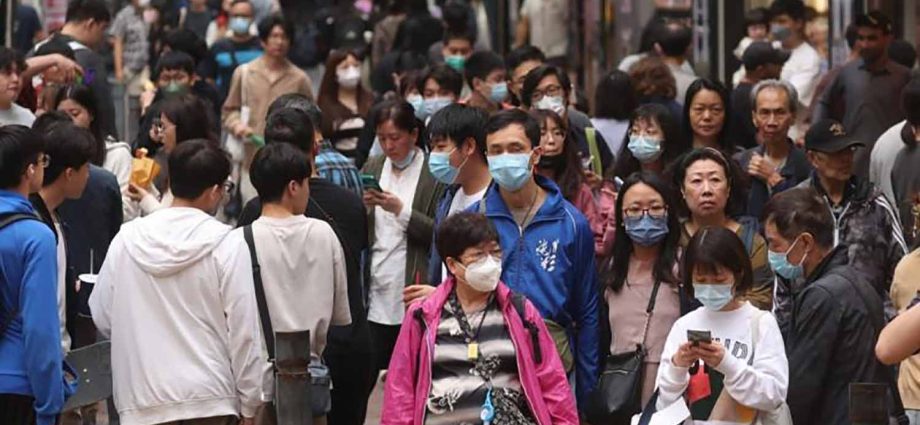Numbers only a fraction of potential infections and death rates have plunged

HONG KONG: The number of fatal and severe Covid-19 cases in Hong Kong last week was almost double the tally recorded in the previous seven days, health authorities have said.
But experts on Friday highlighted the death rate was small compared to the potential daily number of infections.
The news came as it was announced a 13-year-old girl who was in critical condition after she was infected with the flu had died — the second teenager to fall victim to the virus inside a month.
The Centre for Health Protection said in its weekly report there were 119 Covid-19 cases that caused death or severe symptoms between April 23 and 29, compared with 63 in the previous week.
It added the number of severe or fatal infections recorded in the first four days of this week had already reached 69.
But respiratory medicine expert Dr Leung Chi-chiu said the number of Covid-19 deaths or severe cases was small given that 20,000 people could potentially be infected every day and that there was no cause for concern.
He explained that his calculation was based on a University of Hong Kong study where 10,000 people took rapid antigen tests a week.
The estimated daily rate of positive results had been about two in recent times.
“The overall death rate is far lower than the past. If you look at the data around the world, the death rate has dropped by 95% since January,” Leung said.
“Why there seems to be a high number of severe and death cases now is because the frequency of testing has greatly dropped and only cases with serious symptoms are discovered.”
A total of 2,400 coronavirus infections were detected through polymerase chain reaction tests last week, up from 1,615 in the previous seven days.
There were 56 outbreaks in schools or residential care homes last week which affected 306 people, as opposed to 28 outbreaks in the previous week.
The government said on its “Tamar Talk” Facebook page that 224 coronavirus-related deaths and 16,101 cases had been recorded since isolation orders were abandoned on January 30.
The numbers exceeded the figures reported between the city’s first and fourth waves of the pandemic, where there were 213 coronavirus-related deaths and 12,631 Covid-19 infections.
More than 2.86 million coronavirus infections were reported in the fifth wave of the pandemic, with 13,120 related deaths.
The World Health Organization on Friday announced that the Covid-19 pandemic was no longer a “public health emergency of international concern”.
Government pandemic adviser Professor Yuen Kwok-yung said he was pleased the city had reached this “milestone”, but warned that residents must remain vigilant as there could be another pandemic.
“Hong Kong people have fought a good fight,” he said. “Another pandemic will most certainly return to haunt us. Current research shows that it will come from animal hosts. We must protect the natural habitats and ban the sale of wild animals.”
The Prince of Wales Hospital in Sha Tin said the 13-year-old girl who died had developed sepsis after she was infected with the influenza A virus.
The girl, who had not had the seasonal influenza vaccine, had visited mainland China during the incubation period of the disease and was sent to hospital on May 3 after she suffered a fever and vomiting.
A 17-year-old boy who contracted the flu died in early April. He also had not been inoculated.
Leung said it was “rare” to develop such complications from flu infections, but that people should get vaccinated as soon as possible.
“In the three years of the pandemic, the influenza transmission had remained at a low level,” he said. “Children had very limited exposure to influenza and the last exposure may be a long time ago, resulting in a very low level of immunity.”

